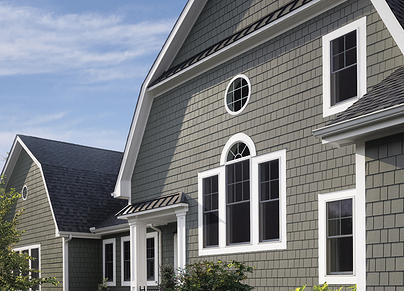What Your Color and Trim Say About You

Homeowners want their home to reflect their personality. One of the easiest ways to do this is through the color and trim, but these elements should be carefully chosen. You may think you have a lot of freedom when you are customizing the color palette of your home, and you do to an extent, but there is actually an art to choosing paint colors. If your home doesn’t fit in with the rest of the neighborhood, or has an unsightly paint job, it can actually decrease the real estate value for you and everyone else! Read through this guide for some help with choosing the right paint color that will represent your home and your neighborhood in a favorable way.
Look at the architecture of your home and surrounding houses. Consider the era of your home and research classic colors of that era for inspiration. Historically accurate colors will increase the beauty, and therefore the value of your home. Victorian houses were classically painted in more saturated, bold tones, while craftsman era homes would be painted in muted neutrals to compliment woodworking elements.
Consider the landscape. Look at the colors of nature surrounding your home and neighborhood for inspiration as well. Temperatures and weather patterns can also give you some insight. A home in a dry desert area painted in a lighter neutral will absorb less heat. If you live in a lush, green part of the country, study a color wheel for complementary colors. A deep, rusty earth-tone may be a perfect accent to your trees and lawn.
Study the other components of your home. If you have brick or stone as part of your facade, you will want to work within the color palette of these elements to tie everything together. Likewise, the color and texture of your roof should be considered as well.
Choose trim and accent colors. Once again, everything will need to work as a cohesive story. Perhaps you really love that rich chartreuse color, but it is just not feasible to paint your entire home pea-green. Work accent colors into the rest of the home. A chartreuse accent may look great with a muted blue-gray. A great trick for selecting trim color is to choose a color for the house and trim within 3 shades of each other on a color swatch. Then give yourself a little more freedom for architectural accent colors.
Hopefully, this guide has brought you a few steps closer to selecting the perfect color palette for your home. Just remember, if all else fails, you can always stick with neutrals and keep everyone happy.
For more suggestions, feel free to contact us at Tri County Windows and Siding.